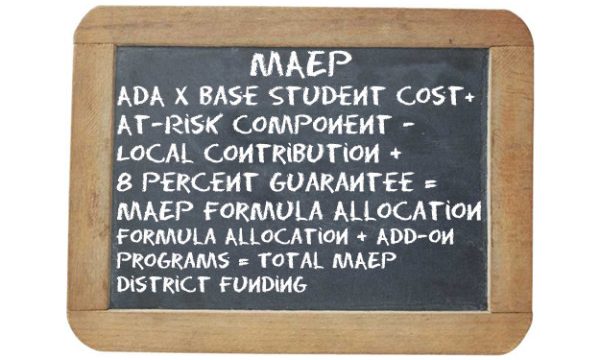Auditor’s report raises issues on MAEP formula

PAINFUL EQUATION: The Mississippi Adequate Education Program funding calculation is not exactly easy to figure.
By Steve Wilson | Mississippi Watchdog
Manipulation of the Mississippi Adequate Education Program formula could add more than $40 million to the state’s education outlay, according to a brief by State Auditor Stacey Pickering for state lawmakers.
Four parts of the MAEP formula — attendance, the at-risk component, administration and the calculation of inflation — are in dire need of reform.
“Our brief shows that those able to manipulate a few characteristics of the formula can increase the funding of K-12 schools by nearly $40 million without even looking at actual need and with no required, targeted spending,” Pickering said in a news release. “Even if we did know exactly how much to fund MAEP with using precise calculations, there is no mechanism in place to ensure that once taxpayer dollars are sent to the districts they will be spent on teachers and students in the classroom.”
Only twice has the Legislature voted to authorize the entire MAEP amount, leading to a ballot initiative and a lawsuit by former Gov. Ronnie Musgrove on behalf of several school districts to “fully fund” the MAEP.
At stake is the state’s fiscal health. If the Legislature was tied to abiding by the funding formula, it could add up in a bonanza for K-12 education at the expense of every other line in the state’s budget.
In the 2016 budget cycle, if MAEP numbers submitted by the Department of Education are fully funded, they’d add up to $2,466,356,110, a 13.4 percent increase from last year’s allocation. The Mississippi Legislature increased K-12 education funding by 3.8 percent for fiscal year 2015, going from $2,062,543,065 in 2014 to $2,134,674,610. That figure represents 35.14 percent of the state’s more than $6 billion budget.
As the old cliché goes, the devil is in the details.
The attendance component is problematic. If the Mississippi Department of Education has its way, the attendance component would be based on basic enrollment rather than the average daily attendance used now. According to the report, if basic enrollment became the new standard, the MAEP calculation would swell by more than $30 million from just that modification alone. It would also remove an incentive for districts to clamp down on truancy.
For the at-risk component, 5 percent of the base student cost is multiplied by the number of students participating in the National School Lunch Program.
However, the at-risk component’s funding methodology would be vastly increased by the new Community Eligibility Provision for the National School Lunch Program. The program allows qualifying schools and districts to have their entire student bodies qualify for free or reduced lunch. Pickering’s report said the CEP could inflate the MAEP’s at-risk component by 10 percent, or $9 million. Fifty-three districts and 506 individual schools could qualify for the program.
Pickering’s office also zinged the administration costs of schools and the lack of accountability mandates that would ensure education funding goes to the classroom and not to overhead. According to the OSA, the rate of growth for administrative costs have outpaced classroom spending every year except in 2004-2005.
According to a law passed in 2006, the inflation component of the MAEP is recalculated every four years, not every year as done previously. This is problematic with the new teacher pay raise that isn’t figured into the MAEP funding calculation. Also, if the federal government raises the rate of inflation, the MAEP’s share of the state budget will climb.
Get regular updates on Mississippi through our Facebook or Twitter accounts







